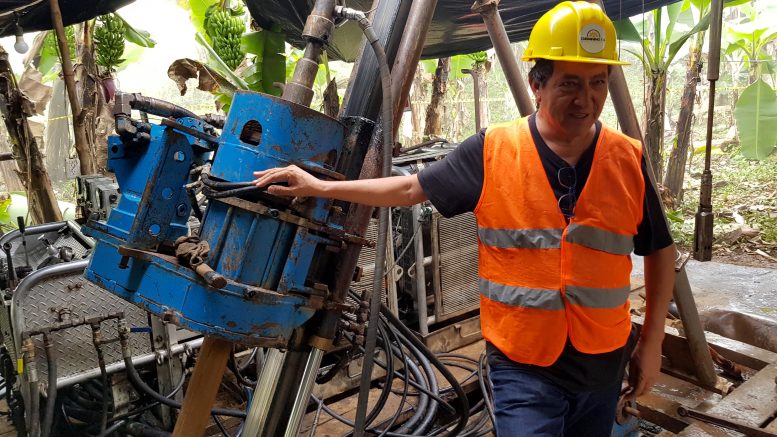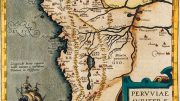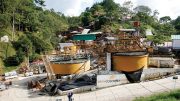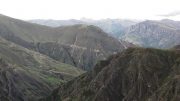After riding out a decade of political and market instability, Ecuador-focused junior Salazar Resources (TSXV: SRL) has emerged with funds and a new focus to explore its portfolio of early-stage projects in the country.
The company is helmed by Fredy Salazar, an Ecuadorian geologist with more than 30 years of experience, including a stint working for Newmont Mining (NYSE: NEM) in the country. Over the years he had a hand in finding some of the nation’s most significant mineral deposits, including Lundin Gold’s (TSX: LUG) Fruta del Norte, Lumina Gold’s (TSXV: LUM) Cangrejos, and Zijin Mining’s Rio Blanco, the company says.
Salazar listed his namesake company in 2007, before enduring years of depressed markets after the 2008 global financial crisis, and stifling mineral development policies under former Ecuadorian president Rafael Correa.
“All through the turmoil, Fredy maintained work programs. His team made discoveries, bought drill rigs, survived, and generated an internal pipeline of projects and ideas,” says Merlin Marr-Johnson, who was appointed in January as a director and vice-president of corporate development.
In recent years the company’s attention was on the Curipamba polymetallic project in central-west Ecuador, which it optioned to Adventus Zinc (TSXV: ADZN) in 2017. “There’s a whole portfolio of projects that have been neglected because of the work on Curipamba.”

Salazar Resources geologist Carlos Aguila (right) at the Pijili project, which is being advanced by Adventus Zinc under the partners’ Ecuador zinc exploration alliance. Credit: Salazar Resources.
Salazar has built up a treasury of $5.1 million (as of March 1, 2019). Through the five-year agreement with Adventus it receives at least US$600,000 per year from management fees, and an advance on production from Curipamba.
Salazar Resources also has a drilling subsidiary, which services Curipamba at market rates and is expected to deliver US$500,000 to US$1 million in income for 2019. The company just added a third drill rig to its fleet, which it plans to employ at its own properties, as well as third-party projects.
Salazar has earmarked $2 million for exploration at its wholly owned projects over the next 18 months. Specific exploration plans are still unsettled, but Salazar expects to spend half of its budget on the Ruminahui copper-gold-silver porphyry property, 100 km northwest of Quito. “It was first mapped and licensed by Fredy 20-odd years ago,” Marr-Johnson says.
The 29.1 sq. km property is 90 km from SolGold’s (TSX: SOLG) Cascabel copper-gold project and 30 km from Codelco’s llurimagua copper-moly project.
Ruminahui was first explored by informal placer miners, who found a large shear zone with narrow, gold-rich quartz veins and accessory copper and silver, the company says. Artisanal miners extracted gold from shallow ore via two adits, as well as panning on-site.
The property has seen little advanced exploration beyond mapping. Rock-chip and channel samples from the two known targets, San Francisco and Sune, yielded high-grade gold.
Drill permits are outstanding on the project, but Marr-Johnson says a 5,000- to 7,000-metre campaign of shallow drilling could be in order. The company is also considering a geophysics program.
Salazar’s ongoing community liaison program is crucial in the sparsely populated, conservative farming community around Ruminahui, he says. Artisanal miners left the property in 2007 after “squabbles” with landowners, and there has been no mining activity on the property since.
“A long time ago Fredy actually bought a farm there, in the heart of the area. So, he has become a neighbour of the landowners,” Marr-Johnson says. “Fredy has been there gradually calming everybody down and opening people up to the concept of exploration there.
“He’s a very quiet-spoken, calming figure. He has been brought in by other companies operating in Ecuador to assist with talking to the locals.”
Another $1 million will advance other exploration properties, including Macara-Bonanza in southern Ecuador, and potentially Alisales in southern Colombia. Both areas host gold vein and copper-gold porphyry targets. However, licences surrounding Macara-Bonanza and the main licences at Alisales have yet to be fully ratified. Upon receipt of the relevant licences, both projects could quickly advance to drill-ready status, Marr-Johnson says.
Meanwhile, Salazar remains fully carried on its 25% stake in Curipamba, where Adventus recently finished a 15,000-metre infill drill program aimed at upgrading resources ahead of a resource update and preliminary economic assessment, expected this year.
Curipamba hosts the shallow, flat-lying El Domo polymetallic volcanogenic massive sulphide deposit. A January 2018 open-pit resource estimate for El Domo outlined 8.8 million indicated tonnes grading 1.62% copper, 2.34 grams gold per tonne, 2.42% zinc, 48 grams silver per tonne and 0.27% lead. Additionally, the deposit contains 2.6 million inferred tonnes grading 1.29% copper, 1.09 grams gold, 1.51% zinc, 29 grams silver and 0.14% lead.
Salazar and Adventus are also cooperating elsewhere in Ecuador after forming a country-wide zinc exploration alliance in 2017. Projects under the alliance are owned 80% by Adventus and 20% by Salazar, with the former incurring all expenses up to a construction decision, while the latter is paid cost, plus 10% for conducting exploration activity.
Two projects, Pijili and Santiago, are part of the alliance. Both are early stage and show copper-gold porphyry and epithermal gold-silver potential. In November 2018, the partners announced the start of an airborne electromagnetic survey over both properties.
Salazar shares sell for 16¢ apiece, in a 52-week trading range of 10¢ to 16¢. The company has a $19.6-million market capitalization.





Salazar had nothing to do with the discovery of Fruta del Norte. Check your facts
Dear Anonymous, Keith Barron’s account (click here) indicates Fredy Salazar was involved when he acquired the Zarza concession which hosts Fruta del Norte.